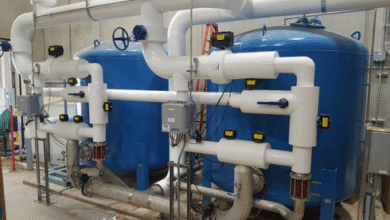Dealing with Sulfur Smell in Well Water: What You Need to Know

There’s a moment when you turn on the tap, pour yourself a glass of water, and—bam!—that unmistakable smell hits you. It’s kind of like rotten eggs in liquid form. If you’ve ever experienced a sulfur smell in well water, you know exactly what I mean. At first, it can be alarming, but it’s actually more common than people realize. Understanding what causes it, why it matters, and how to fix it can save a lot of stress—and improve your water quality significantly.
I’ll be honest: the first time I noticed it in my own well, I panicked a little. I wondered if it was a sign that my water was unsafe. After some research, though, I learned that while the odor is unpleasant, it isn’t always harmful. That said, there’s a lot more to consider, from the source of the smell to the methods for treatment.
What Causes the Sulfur Smell?
The sulfur or “rotten egg” smell is typically caused by hydrogen sulfide gas in the water. This gas forms naturally when sulfate-reducing bacteria interact with minerals in your well, or it can be present due to the decay of organic matter underground. Wells that run through areas rich in sulfur-containing minerals are more prone to this issue.
It’s interesting because the intensity of the smell can fluctuate. Sometimes it’s noticeable only when the water is hot, like in your shower, because heating releases more hydrogen sulfide gas. Other times, the smell is strong right out of the tap. Understanding these patterns can help determine the source and the best approach for fixing it.
Why Sulfur Smell Isn’t Just Annoying
Even though it’s tempting to just tolerate the smell, there are reasons to address it. Besides the obvious odor, hydrogen sulfide can corrode pipes over time, damaging fixtures and appliances. It can also affect the taste of water, making cooking and drinking less enjoyable. I remember making pasta once, and the noodles tasted oddly metallic—turns out, the sulfur in the water was responsible.
If the odor is persistent and strong, it can be an indicator of higher bacterial activity in your well. That doesn’t automatically mean your water is unsafe, but it’s a warning sign that treatment or testing might be a good idea.
Differences Between Sulfur Smell and Sulfur Odor
You might notice people use different terms to describe the issue: “sulfur odor in well water,” “rotten egg smell,” or even “sulphur smell.” Technically, they all refer to the same thing—hydrogen sulfide in the water—but the distinction is often in how people perceive it. Odor can be more subtle and intermittent, whereas a sulfur smell tends to be noticeable immediately.
Understanding the difference is important when communicating with water treatment professionals. Describing whether it’s constant, intermittent, or stronger in hot water can help them pinpoint the cause and recommend the right solution.
Common Signs You Have Sulfur in Your Water
Aside from the obvious smell, there are a few other hints that hydrogen sulfide is present. These include:
- Black or gray staining on sinks, fixtures, and laundry.
- A slightly metallic or bitter taste in drinking water.
- Cloudiness or discoloration that appears over time.
- Smell intensifying when water is heated.
I didn’t realize until a friend pointed it out that the black residue in my bathroom was directly linked to the sulphur smell. Once I understood the connection, it was easier to focus on treatment rather than just masking the problem.
How to Test Your Water
Testing your water is the first step toward solving the issue. You can purchase home testing kits that measure hydrogen sulfide levels, or you can send a sample to a certified laboratory for more detailed analysis. Professional testing is particularly useful if you want to determine the exact concentration and whether other bacteria or contaminants are present.
A little preparation goes a long way. Take water from different points in your home—cold tap, hot tap, and even directly from the well. That gives a more complete picture and can reveal if the problem is localized or systemic.
Treatment Options
Once you know the extent of the problem, there are several ways to address it. Treatment depends on hydrogen sulfide concentration, water flow, and whether other minerals are present. Some common options include:
- Aeration Systems – These remove hydrogen sulfide by exposing water to air, allowing the gas to escape before it enters your plumbing. They’re effective for low to moderate concentrations and also improve taste.
- Activated Carbon Filters – These can absorb sulfur compounds, reducing both odor and taste issues. However, they require regular maintenance and may be less effective for very high hydrogen sulfide levels.
- Oxidizing Filters – Using media like manganese greensand, these filters convert hydrogen sulfide into a solid that can be trapped in the system. They’re particularly effective for high concentrations.
- Shock Chlorination – Occasionally used in wells, chlorine treatment kills bacteria responsible for sulfur production. It’s a temporary solution and may need to be repeated periodically.
I went with a combination of aeration and carbon filtration in my own home. It wasn’t instantaneous, but within a few days, the smell had diminished dramatically, and the water tasted noticeably better.
Maintenance and Prevention
Once you’ve treated the water, ongoing maintenance is key. Regularly inspecting the system, replacing filters, and monitoring water quality helps prevent the problem from coming back. Keeping your well sealed and ensuring proper drainage around the well can also reduce the risk of bacterial growth that contributes to sulfur production.
It’s worth noting that sometimes seasonal changes can temporarily affect sulfur levels. Rainfall, groundwater fluctuations, or changes in water usage can bring the smell back, so periodic monitoring is wise.
When to Call a Professional
Some issues are straightforward and manageable at home, but persistent or strong sulfur smells may require professional intervention. A water treatment specialist can assess your well, test the water comprehensively, and recommend a long-term solution tailored to your needs. They can also ensure that any system you install is properly sized and maintained.
I realized that after trying a few DIY fixes that didn’t quite work, calling a professional saved me both time and stress. They helped me select the right filtration media and explained maintenance schedules that made the system virtually worry-free.
Final Thoughts
Dealing with sulphur smell in well water isn’t fun, but it’s manageable. Understanding the source, testing your water, and implementing the right treatment can restore taste, remove odor, and protect your plumbing. More importantly, it brings peace of mind, knowing the water your family drinks and uses every day is clean and safe.
Water quality can feel like a hidden factor in your home until something goes wrong. Once you pay attention to subtle cues—like that rotten egg smell—you can take meaningful action to protect both your health and your home. Addressing a sulfur odor in well water might not be glamorous, but it’s one of those small but impactful improvements that make daily life better, safer, and more enjoyable.




